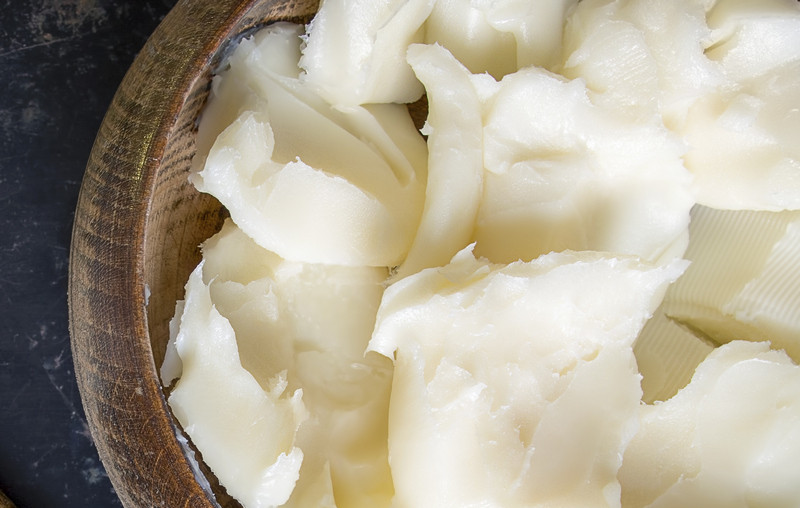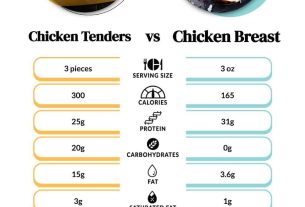Shortening is one common pantry stock especially to those who loves to bake, but you need not be a baker to know about shortening and its substitute because it can help you one way or another if you love to cook.
You can thank shortening ingredient if you love crumbly pastries because it is what makes crust of pastries like tart to be crumbly. Others think it is the same with butter or margarine but though they look the same and may have the same texture, they are different for each other.
If you love making homemade pastries, then shortening is your best friend and maybe you have already found the best alternative for your baking needs. Apart from baking, there are also other recipes that need shortenings.
So, what shortening substitutes can you use in your recipe? Butter is often used as a shortening substitute but apart from it, there are different shortening alternatives you can use like lard, coconut oil, and margarine.
Just keep reading this article and we will give you the details of the different shortening alternatives you can use.
Your Guide to Shortening and Using Substitutes
Bakers know their shortenings and understands every baking recipe especially if they aim to have that flaky and crumbly crust on their pastries and cookies. Shortenings are a must when baking as it gives the right consistency, texture and balances flavors when combined with other ingredients.
So, what is shortening? It is described as fat that is used in baking. It is a processed fat that becomes solid when left at room temperature. Its characteristics are similar with butter, but it is not the same with margarine and butter.
Shortenings have lighter color which can be whitish or yellowish. It has thicker texture than margarine or butter which distinguish it from both. It may look similar to butter or margarine, but the fact is, they are different in terms of what they are made of and how they are made.
Uses for Shortening
We are aware that shortenings are typically used in baking cookies and most types of pastries. However, you can do more with shortenings apart from being a baking ingredient.
Shortenings are mostly used as food ingredient but there are other uses as well. Check our list for some of its uses.
- For frying food
- For popping or cooking popcorns
- Sautéing vegetables
- As oil alternative in a recipe
- Greasing pots and pans
- For waffles and pie crusts
- Remove gum on clothes and hair
- As skin moisturizer
- Greasing locks, hinges, and others
Do not limit yourself from using shortenings for cooking and baking because there are other uses of shortenings that might surprise you.
The Best Substitutes for Shortening
Some people look for alternatives to shortening for healthier options while some wanted to use what is readily available in their kitchen. The downside of using alternatives is that there could be a little effect on the taste or texture of your dish.
Here is the list of alternatives to shortenings you can use with brief description.
1. Lard
The nearest substitute for shortening you can find is lard. Shortening and lard is almost similar due to the fat contents, but lard contains animal fat while shortening can only contain vegetable oil.
Animal fat is what makes the lard, and it is has high cholesterol content. Shortenings can be made from animal fat or vegetable oil.
Lard has a distinct meaty taste depending on what animal fat it is made from. This makes a good substitute for frying food. You can taste the difference of chicken fried in lard and the one fried in vegetable oil. Lard when used for frying enhances the meaty taste.
Shortening does not usually have flavor so if you will choose lard as substitute for baking, you will notice the slight meaty flavor or different taste from lard, but it will not really overcome the taste of your baked goodies.
Since lard is from animal fats, it is not a good alternative for vegans or vegetarians. It cannot also prevent the development of glute in products with wheat, but shortenings can. Apart from cooking or baking, it can also be use as ingredient in making soap and used in some biofuels.
2. Margarine
One of the commonly used alternatives for shortening is margarine. It is considered by others as the best substitute because there is unnoticeable difference in taste and also does not affect the baked goods texture.
Shortening and margarine both have hydrogenated oil from vegetables as main ingredient. Margarine is said to only have about 80 percent fat while shortenings have almost 100 percent that is why others also prefer margarine.
Margarine, like shortening has milk solids, water, and other food additives. Shortening has no flavor while margarine has a distinct flavor that can affect your recipe or baked goodies. It has a strong buttery taste than shortenings.
Though margarine does not really make your pies crusts’ crumbly, it is still preferred as substitute to baking. It is also not suggested for frying since it can make the food taste burnt when subjected to high heat temperature.
One important tip when using margarine instead of shortening for baking is to add 2 tablespoons of margarine for each cup of shortening. It means, for a recipe that needs a cup of shortening, add a cup and 2 extra tablespoons of margarine. The amount of margarine when using it as substitute for shortening should be added extra amounts.
It is always best to look at the recipe so you know how much of extra margarine should be added as alternative to shortening.
3. Butter
Butter has lesser fat contents than shortening or margarine and that makes it the best substitute for shortenings if you prefer the one with less fat contents. But unlike shortening, it has low smoking point or low heat melting temperature, so it melts quickly during baking. It has 80 percent fat and 20% water that makes it thinner compared to margarine and shortening. Shortenings needs high-heat temperature to melt. It can be best due to lesser fat content, but it is not ideal for baking.
Another difference when you used butter instead of shortening is that your baked goodies will appear flat or less thick. Butter does not overpower the taste of your food or baked goodies, but you can taste that distinct butter flavor.
Butter can also be made with milk, dairy cream and other proteins and can have strong butter taste. If you do not like that buttery taste on your recipe or baked goodies, then butter will not be the best alternative for you.
Since butter melts easily, it can also affect the texture of your baked goodies. Remember that every alternative you used for shortening will also have the taste and texture of your dish.
A tip for using butter instead of shortening, just like using margarine instead of shortening, add extra amounts of butter. Two tablespoons on top of a cup of butter for every cup of shortening, but again you need to check your recipe.
4. Coconut Oil
Coconut oil is not commonly used as alternative to shortening but this is a healthy substitute. It has natural oil with lots of health benefits apart from adding texture and flavor to your dish, pastries, or other baked goodies.
Coconut oil works similarly to butter and when used as substitute for shortening, you also need to add extra amount. It has a distinct coconut taste that may affect your food so know your recipe before using it.
Coconut oil is known to have anti-bacterial property, help boost metabolism, promote heart health, and raises good cholesterol in the body. This could also be the best option for vegans or vegetarians since this is natural and plant-base ingredient.

Related Questions
It is interesting to know what alternatives to shortenings you can use and what could be their effects on your dish or baked goodies. We expect that you were able to learn from this article and get more related information from our Q&A.
Is shortening healthier than butter?
Shortenings also comes in variety as to the ingredients. It can sometimes have high or low saturated fat. Butter has high saturated fat than shortenings and can contain some proteins and other nutrients depending on its ingredient. So, you can check the label of shortenings and butter you want to use to know which has lesser fat content and which is healthier. That way you can also tell which is best for you.
Can you use Shortening as alternative to margarine or butter?
Since you can use either margarine or butter as substitute for shortening, then you can do it vice versa. Keep in mind though that shortening has lesser water content that margarine and butter that could affect your recipe.
Do you need to refrigerate shortening?
You may store shortening in the refrigerator or keep it frozen if you want to, but it is not necessary. It is not recommended to refrigerate shortenings even its container has been opened. It is just fine to store it in a dry and cool place like your cupboard or pantry cabinet just be sure to seal it tightly.


